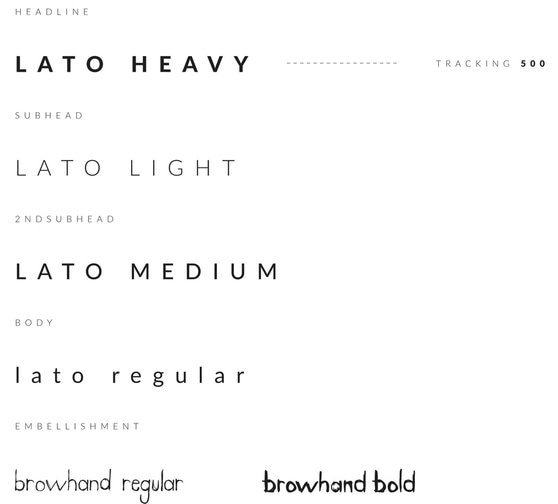|
Okay first of all, what is a style guide? Here's what Wikipedia says, A style guide is a set of standards for the writing and design of documents, either for general use or for a specific publication, organization, or field. WHY HAVE ONEOkay now that you know the definition of a style guide, you're probably thinking why is this important to me as a small business owner, and what are these standards that Wikipedia is talking about? When a suspect is being questioned, are they more or less trustworthy when their story is consistent or inconsistent? Obviously you are more likely to trust someone if their story is consistent. The same is true of brands. Think of a large retailer that you like and trust. Do they use the same font on their website as they do in magazine ads? Do they use different imagery in their television ads than they use on their in-store banners? Successful companies are consistent with the visuals of their brand. When a businesses doesn't do this, they run the risk of confusing their customers. It comes off as lazy and untrustworthy. This is where a style guide helps. It creates standards for you to follow so that your brand looks consistent across all platforms. WHAT'S IN ITNow that you know why your business needs a style guide, you may be wondering what should be in your style guide. What's in a style guide will depend on your specific needs. Are you a writer creating a blog? How about a photographer who needs a watermark for your photos. Maybe you are a coffee shop that needs a logo, menu and Facebook ads. Here are a few examples of things you may want in your style guide. CLEAR SPACE When designing a logo, the designer will specify the minimum amount of empty space around the logo. This is referred to as the clear space. Any text or design elements are placed outside of this buffer. The purpose of it is to maintain the visual impact of the logo. TYPOGRAPHY Typography is a huge part of design so style guides usually have rules for how and when it is used. It may specify what font is used for headlines, sub headlines, and body text. The style guide may be simple, or as specific as to what the point size and tracking should be set to. COLOR
Color can be a powerful tool. Color can set the mood of a design. Studies have shown that different colors are associated with different emotions. A style guide will give a business a specific color palette to work with. It will specify the primary colors and secondary colors that are to be used less often. The guide will also give the specific RGB, CMYK, HEX and sometimes Pantone numbers for the colors.
0 Comments
Leave a Reply. |
ARCHIVES
October 2018
AUTHORBrad Rowlison |





